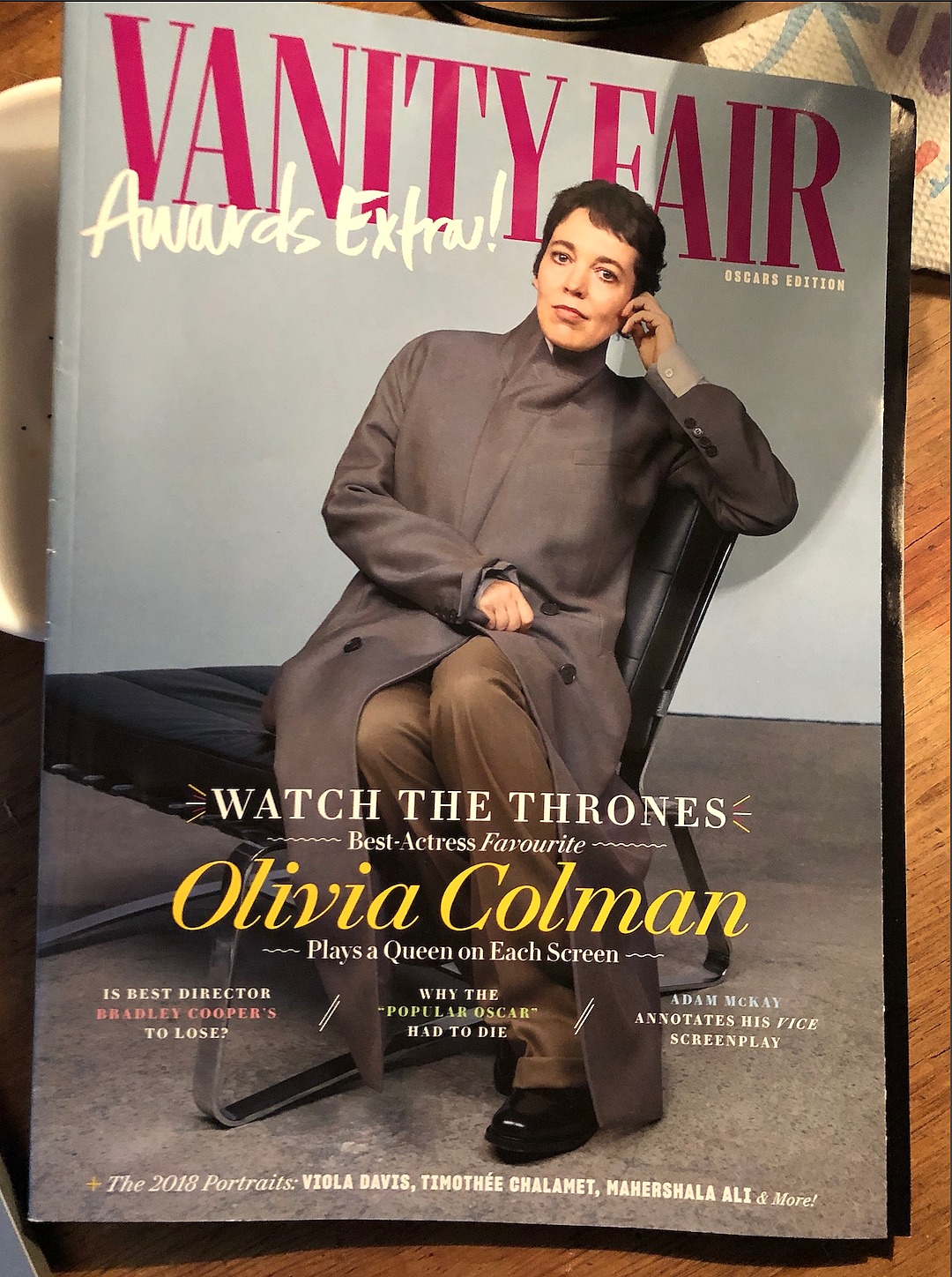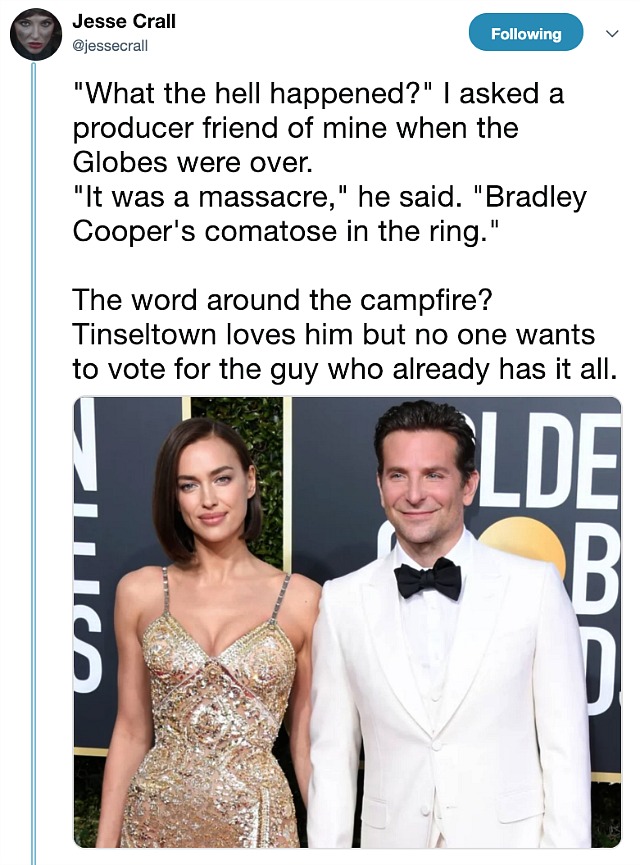Yesterday I received a Vanity Fair “Awards Extra!” supplement issue that seems — emphasis on the “s” word — to be the definitive 2019 “Oscars edition”. The issue is 76 pages and feels like an echo of what used to be, and the cover photo of the great Olivia Colman feels dull and pedestrian — no style.
Is this some kind of teaser, this thing? Will a real-deal Vanity Fair Hollywood issue publish in early February, or is this it?
Remember the years when the special Vanity Fair Oscar/Hollywood issues would be stuffed with ads, and with all the biggest stars posing in a big en masse fold-out? What happened to that swanky attitude, that “we own the world and everybody wants to join our club” vibe?
Remember when Annie Leibovitz was the default, blue-chip photographer for the super-stylish, cost-was-apparently-no-object, all-the-cool-kidz-of-Hollywood photo spread?

Remember the years when there would always be at least one if not two fully researched, seductively written, looking-back-at-the-glory-days piece by Peter Biskind or Sam Kashner or one of the other heavy-hitter writers? The calamity of Ishtar, when Mike Nichols went kerflop with The Fortune, when Clint Eastwood found his romantic directing mojo with The Bridges of Madison County, the making of William Wellman‘s Star Is Born…that line of country.
Obviously things are not what they once were. The current “Awards Extra!” issue (whether it’s some kind of teaser or not) is like some kind of mildly okay Hollywood Reporter supplement. It’s fine as far as it goes, but it doesn’t exude that top-of-the-world AAA bucks-up vibe that the Vanity Fair Hollywood issues had…what, only three or four years ago?
On top of which the subhead for Richard Lawson‘s Best Picture lay-of-the-land piece (“This Race Could Change Everything”) reads “Oscar bait like First Man is in the game — but so are more tantalizing possibilities.” I hate to say this because I’m a serious admirer, but poor First Man isn’t in the game at all except for Justin Hurwitz being up for Best Musical Score and maybe a tech award or two. It breaks my heart but it’s true.
I’ve been complaining about the Vanity Fair downswirl for a few years now. When Graydon Carter left and VF basically became a kind of glammy “woke” fashion magazine…that was kind of what did it for me.
It just feels as if things are limping along in a scaled-down way.




